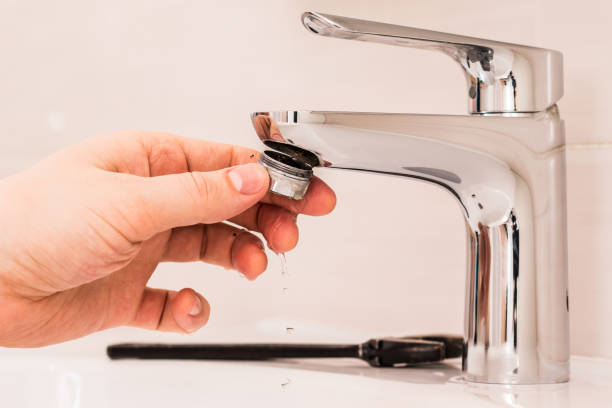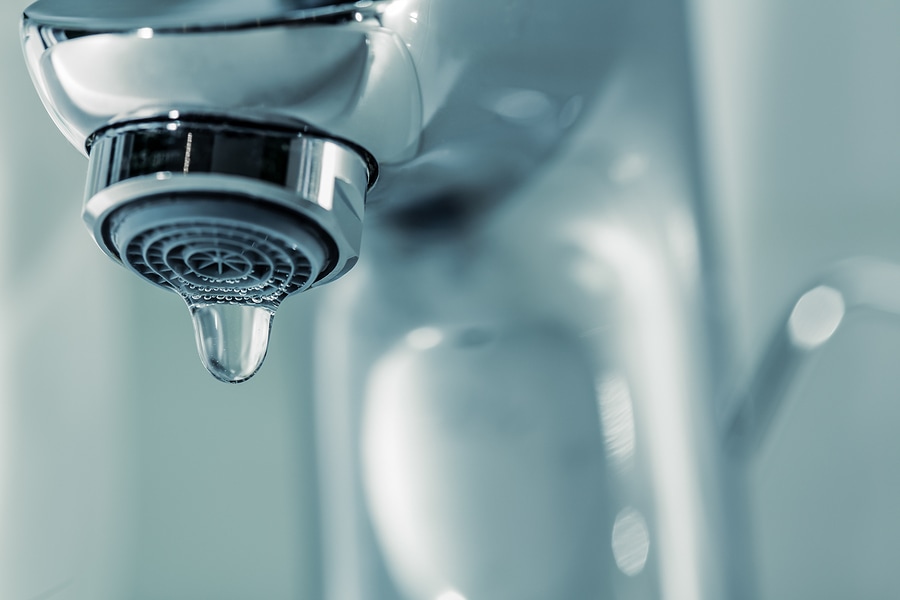An Value of Resolving a Faulty Faucet
An Value of Resolving a Faulty Faucet
Blog Article
Just how do you feel in relation to Water Dripping from Faucet: Why and How to Fix?

Dripping faucets may appear like a minor hassle, however their effect exceeds simply the nuisance of the audio. From drainage to sustaining unneeded economic prices and wellness dangers, neglecting a leaking faucet can result in numerous effects. In this post, we'll explore why it's important to address this usual house problem quickly and effectively.
Wastefulness of Water
Ecological Effect
Dripping taps contribute significantly to water wastefulness. According to the Epa (EPA), a solitary faucet leaking at one drip per second can lose more than 3,000 gallons of water each year. This not only pressures water resources yet also impacts communities and wild animals dependent on them.
Step-by-Step Overview to Repairing a Dripping Tap
Tools Needed
Prior to attempting to take care of a trickling faucet, gather the needed devices, including an adjustable wrench, screwdrivers, substitute components (such as washers or cartridges), and plumber's tape.
Common Faucet Issues and Their Solutions
Determine the sort of tap and the specific issue causing the drip. Typical issues consist of damaged washing machines, rusty shutoff seats, or malfunctioning O-rings. Describe supplier instructions or online tutorials for detailed advice on repair work.
Financial Costs
Raised Water Costs
Beyond the environmental effect, trickling faucets can inflate water costs significantly. The collected waste in time converts right into higher energy expenditures, which can have been avoided with prompt repairs.
Potential Home Damage
Moreover, extended dripping can bring about damage to components and surfaces bordering the faucet. Water buildup can trigger discoloration, rust, and also structural problems if left unattended, leading to added repair work prices.
Health and wellness Concerns
Mold and Mold Development
The constant existence of dampness from a dripping faucet produces an excellent environment for mold and mold development. These fungis not just endanger interior air high quality yet additionally posture health risks, especially for individuals with breathing conditions or allergies.
Waterborne Diseases
Stagnant water in dripping faucets can end up being a breeding ground for bacteria and other virus, raising the threat of waterborne illness. Pollutants such as Legionella bacteria grow in stationary water, potentially leading to serious illnesses when consumed or breathed in.
DIY vs. Professional Fixing
Pros and Cons of Do It Yourself Repair Work
While some might attempt to deal with a leaking faucet themselves, do it yourself repairs include their own set of obstacles. Without appropriate expertise and tools, do it yourself attempts can aggravate the issue or cause incomplete repair work, lengthening the problem.
Benefits of Employing a Specialist Plumber
Hiring an expert plumber makes certain that the underlying cause of the dripping faucet is attended to properly. Plumbings possess the know-how and tools to identify and fix tap concerns effectively, saving time and lessening the threat of further damage.
Ecological Responsibility
Private Payment to Preservation
Taking duty for repairing trickling faucets lines up with more comprehensive initiatives towards water conservation and ecological sustainability. Every person's activities jointly make a considerable effect on protecting precious sources.
Lasting Living Practices
By prioritizing prompt repairs and taking on water-saving routines, individuals add to sustainable living methods that benefit both existing and future generations.
Preventive Measures
Regular Upkeep Tips
To prevent leaking faucets, do routine upkeep such as cleaning aerators, evaluating for leaks, and changing worn-out parts quickly. In addition, think about setting up water-saving tools or upgrading to a lot more reliable fixtures.
Value of Prompt Services
Addressing leaking taps as quickly as they're seen prevents further water wastefulness and potential damage, ultimately saving both water and money in the long run.
Impact on Residential Property Worth
Assumption of Well-Maintained Building
Keeping a property in good condition, consisting of resolving upkeep problems like dripping faucets, enhances its regarded value and charm among possible purchasers or renters.
Influence on Resale Worth
Qualities with well-kept plumbing components, including taps, command higher resale worths in the property market. Attending to dripping taps can add to a positive impact during property assessments and negotiations.
Final thought
Resolving a dripping tap surpasses mere comfort; it's an essential action towards conserving water, decreasing monetary prices, and safeguarding health and residential property. Whether via do it yourself repairs or professional support, acting to take care of leaking taps is a little yet impactful way to advertise accountable stewardship of sources and add to a much healthier, more sustainable future.
How to Fix a Leaky Faucet: Step-by-Step Repair Guide
A leaky faucet may seem like a simple annoyance, but if it's not fixed promptly, that leak could cost hundreds to potentially thousands. From water damage to mold, mildew, and high water bills, even a tiny leak can be catastrophic if left unattended. Damage like this can even affect the overall value of your home, so it's important to take the right approach for leaky faucet repair. You may need the help of a plumber in some cases, but we've got a few tips you can try on how to fix a leaky faucet before calling the pros.
Four Faucet Types
When you're learning how to fix a leaky faucet, the first step is knowing what kind of faucet you're working with! There are four common types.
Cartridge Faucets
Cartridge faucets come in one- or two-handled varieties. In one-handled cartridge faucets, hot and cold water combines in a single cartridge. In the two-handled versions, hot and cold water are controlled separately and mixed in the faucet.
Ball Faucets
Ball faucets have a single lever you push up and down to adjust the pressure and rotate to change the temperature. A slotted metal ball controls the amount of water allowed into the spout.
Compression Washer Faucets
They're the oldest type of faucet, but they're still used in many homes — especially older ones. Compression faucets have two separate handles that, when turned, raise or lower the washer that seals a water valve. This valve stops water from flowing through the faucet when it is turned off.
Disc Faucets
Disc faucets rarely need to be repaired due to their maintenance-free design. The water flow is controlled by two discs — the upper one raises and lowers against a fixed lower disc, creating a watertight seal. If your disc faucet starts leaking, you may need to replace the seals or clean residue buildup from the inlets.
Fixing a Leaky Faucet
Step 1: Turn Off the Water
Whether you're learning how to fix a leaky bathtub faucet or how to fix a leaky kitchen faucet, always turn off the water supply to your working area when you're fixing a leak. The last thing you want is a flood added to your list of things to fix.
Look for the shutoff valves below your sink or around the tub and turn them clockwise to stop the water flow. If your faucet doesn't have shutoff valves, you may need to turn off the water for the whole house. Check to make sure it's off by turning the faucet on. If nothing comes out, you're ready to start the repair.
Step 2: Take Apart the Faucet
How you disassemble your faucet depends on the type of fixture you have. You can use a flathead screwdriver to remove the caps on top of the handle or handles for cartridge and compression faucets. Inside, you should see handle screws. Unscrew these with a screwdriver to remove the handle.
Disc- and ball-style faucets will typically have an inlet screw near the handle, and removing that will reveal the interior of the faucet.
Detach the Valve Stem
For cartridge- and compression-style faucets, you'll see the inner valve stem or cartridge once you remove the faucet handles. If you have a compression faucet, unscrew the brass valve stem. If you have a cartridge faucet, pull out the cartridge. If your cartridge has been in place for a while, it may require some tools or extra force to remove it due to mineral deposits.
Examine and Replace Parts
Once you've removed the parts, check them out to confirm what needs to be replaced. You may see corroded rubber washers, O-rings, stems, or cartridges. On a ball-style faucet, check the seats and springs for damage.
If you need to repair a leaky disc faucet, check the inlet and seals on the lower disc.
Once you determine what parts must be replaced, visit your local hardware store. Bring the damaged parts with you to ensure you can purchase the correct components to replace them.
Clean Valves and Faucet Cavity
If you've removed a stem or cartridge, you may notice mineral buildup in the faucet's threads. Use white vinegar to clean the valve seat by soaking it for a few minutes, then scrub it away with a soft toothbrush and rinse with warm water. You can also clean the interior of the faucet in the same way.
Reassemble the Faucet
Once your faucet is cleaned and the required parts have been replaced, it's time to reassemble it. Put the pieces back together and slowly turn the water supply back on. Doing this slowly is crucial because too much initial water pressure can damage the new hardware you've just installed.
https://homewarranty.firstam.com/blog/how-to-fix-leaky-faucet

I'm certainly very focused on Why Are My Faucets Dripping (And Can I Fix It Myself)? and I am assuming you appreciated our blog post. Make sure you take the opportunity to share this blog posting if you liked it. Kudos for your time. Kindly come visit our blog back soon.
Report this page